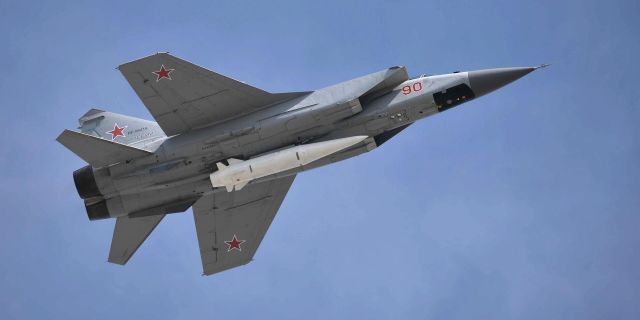Die Welt (Germany): what does the use of the Dagger missile mean for the West
In a military special operation in Ukraine, Russia used hypersonic weapons for the first time, writes Die Welt. Experts consider the use of hypersonic weapons as Putin's warning to NATO. Interception of such missiles is almost impossible due to their enormous speed. This puts the West in front of an unsolvable problem, the author of the article notes.
In a military special operation in Ukraine, Russia used hypersonic weapons for the first time.
The Dagger missile was launched from the aircraft. She destroyed an underground warehouse in the south-west of Ukraine. According to the Russian Ministry of Defense, during the attack on Friday in the Ivano-Frankivsk region, missiles and aviation ammunition of the armed forces of Ukraine were destroyed. An expert on atomic weapons, Hans Christiensen, points out that this warehouse was used during the Cold War as a repository for Soviet nuclear weapons.
In addition, it is reported that two military intelligence strongholds were destroyed by hypersonic weapons in the Odessa region. It is not yet possible to double-check this data.
For the first time since the beginning of the military operation, Moscow reported the use of the "Dagger". This rocket can fly at a speed ten times the speed of sound. In this regard, the reaction time after its identification is extremely short. Therefore, the missile is considered practically invulnerable to Western air defense systems.
Despite the ultra-high speed, the rocket can also be controlled, which further complicates its reflection. Experts have long pointed to the window of vulnerability of the West to Russian hypersonic weapons: missiles and guided aircraft capable of flying to the target at more than five times the speed of sound.
Russia does not provide technical details
Military experts consider the use of hypersonic weapons as Putin's warning to NATO, anticipating the possible next stage of escalation of the conflict. The used Dagger missile was equipped with a conventional warhead. But this model is also capable of carrying a nuclear warhead with a capacity of 100 to 500 kilotons. This is ten times the power of the American atomic bomb dropped on Hiroshima – its explosive force was 13 kilotons in TNT equivalent.
Russia has not reported the technical details of the use of the "Dagger". In similar cases, the Russians used MIG-31K fighters or TU-22M3 supersonic bombers during maneuvers or test launches. Thanks to the launch from the air, the range of the rocket increases and is allegedly 2 thousand kilometers.
A rocket with a solid-fuel engine, after separation from the aircraft, rises to an altitude of 18 kilometers - that is, significantly higher than the flight level of passenger aircraft – and then crashes on the target. The Dagger is based on the Iskander-M short- and medium-range ballistic missile launched from the ground.
NATO and especially its European members are aware of the danger of Moscow's hypersonic weapons. However, they still do not have an effective system to reflect it. Investing billions of dollars, the Pentagon is trying to create systems to intercept Russian and Chinese hypersonic weapons capable of reaching speeds 27 times the speed of sound and delivered to targets using space gliders.
Thus, the American military-industrial concern Northrop Grumman was commissioned to develop a project estimated at $ 13 billion. The largest European concern MBDA, specializing in guided weapons and having Airbus as one of the main shareholders, is also developing systems for intercepting hypersonic weapons. But this requires new anti-missiles.
In Europe, hypersonic weapons are mostly discussed or scientific research is being conducted. So, according to the Welt newspaper, a few days before the start of the operation in Ukraine, the European Defense Agency (EA) commissioned a study on this topic and allocated 700 thousand euros for this. Its goal is to "explore potential new technologies and methods of repelling hypersonic threats, including sensors and countermeasures."
This task was given to a number of European state research centers, for example, the French Onera, the German concern Hensoldt, the Italian Leonardo and the Italian subsidiary of MBDA. But the question is whether, on the basis of these fundamental studies, it will be possible to develop effective anti-missile systems, and if so, when.
Gerhard Hegman

